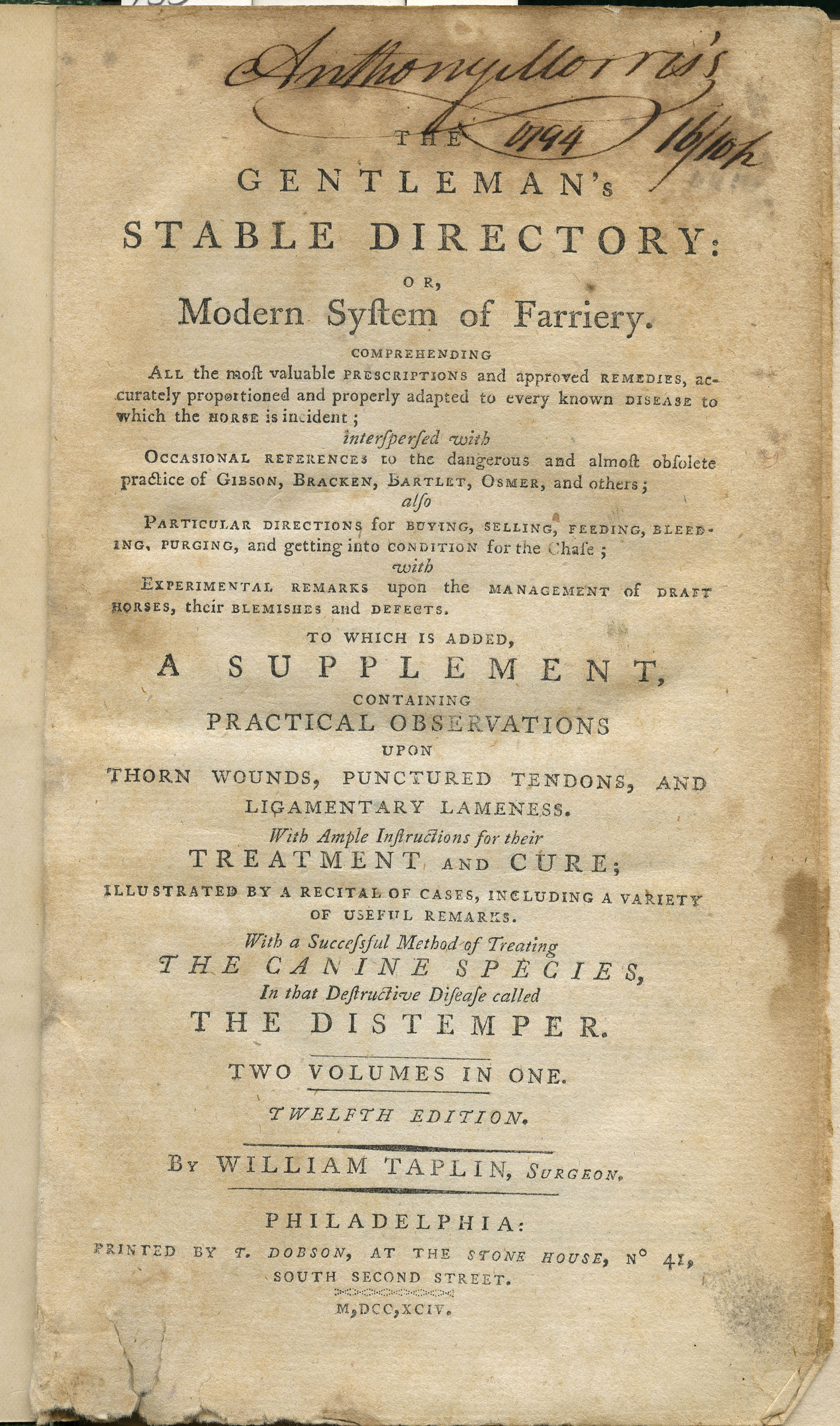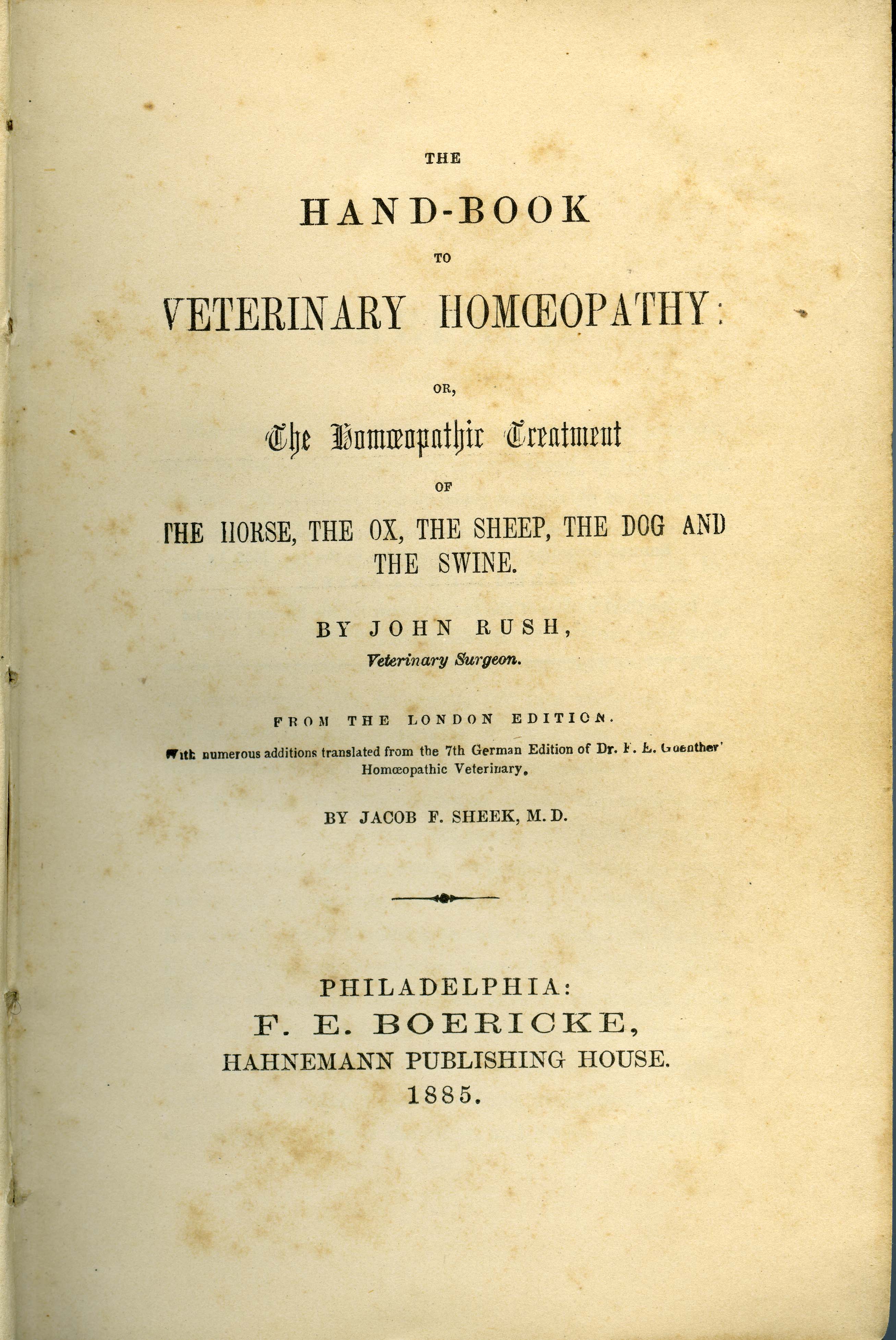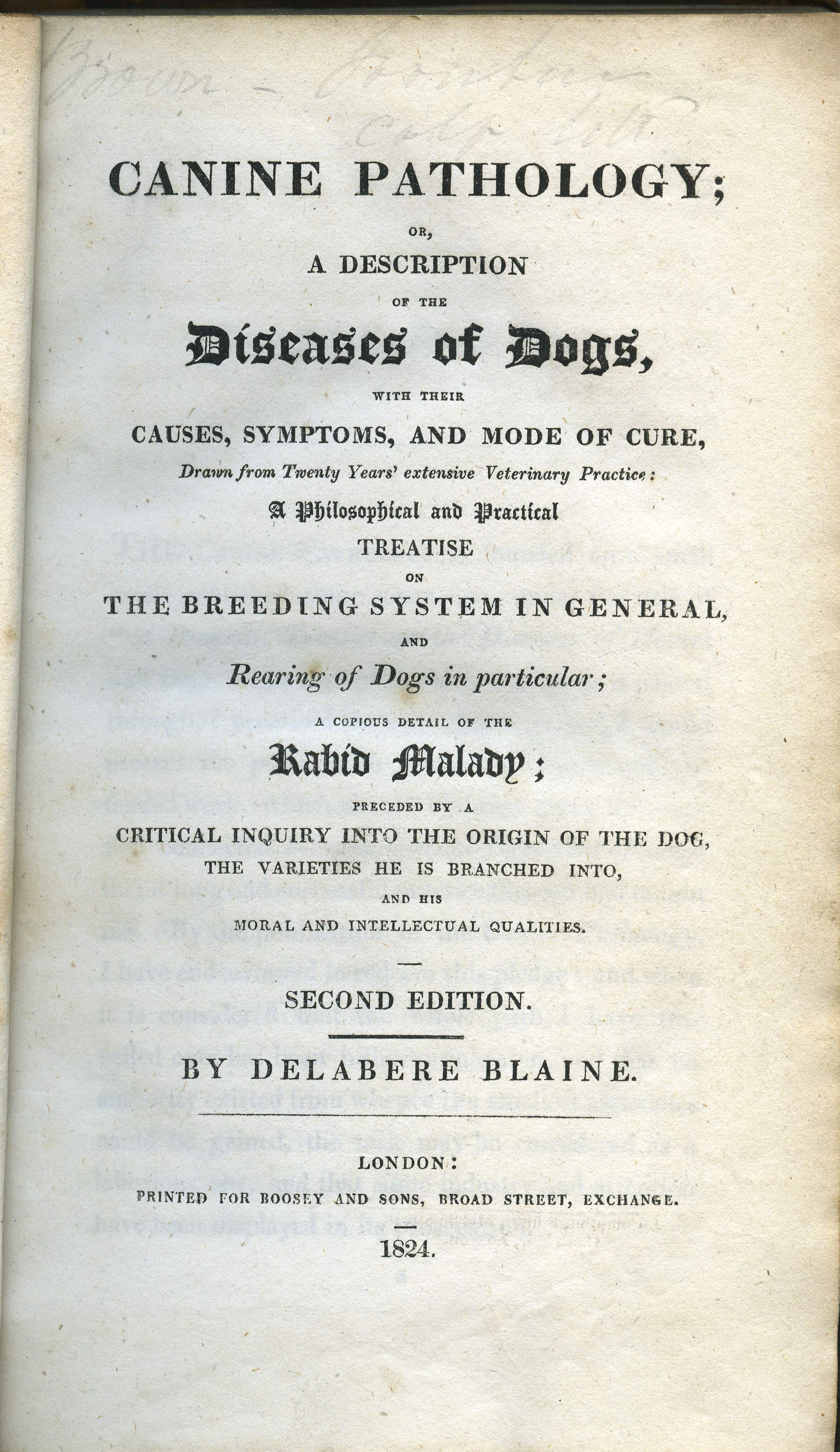Surgeon-veterinarians
A variation on the agricultural writer’s profile is the surgeon-turned-veterinarian who contributed a more scientifically based attitude to the practice and literature of veterinary medicine. Beginning in the late 1700s animals had important roles to play in the evolution of medical science in studies of comparative anatomy and as experimental subjects. In pursuit of knowledge, some British surgeons turned to animal care, although not all acquired additional qualifications as veterinarians. According to Woods (2017, p. 6) "Evidence suggests that in the first ten years of the LVC's [London Veterinary College] existence, the majority of the 101 students who qualified were surgeons." The LVC was founded in 1792. Additional enticements for surgeons to turn to veterinary practice included leaving the low-status surgeon employment category and gaining financially by enlisting in the military as a veterinary officer at a higher rate of pay than a regimental farrier. Ironically, veterinarians had less social status and recognition than surgeons.
"Evidence suggests that in the first ten years of the LVC's [London Veterinary College] existence, the majority of the 101 students who qualified were surgeons." Woods (2017, p. 6)
The surgeon-veterinarians as authors have fared better in historical analysis when compared with agricultural writers. Summing up the contributions of this group to the development of the profession, Smithcors (1957, p. 255) notes, “In general, the contributions of this group fall into three categories: advocacy of improved practice by intelligent persons, greater attention to diagnosis, and humane methods of treatment.” Blaine, Taplin, Moorcroft, Gunther and Rush with works in the Rosen collection are examples of surgeons who turned to the study of veterinary medicine.
“In general, the contributions of this group [surgeon-veterinarians] fall into three categories: advocacy of improved practice by intelligent persons, greater attention to diagnosis, and humane methods of treatment.”(Smithcors, 1957, p. 255)
Delabere Blaine (1768-1845) was a London-born academic with a varied career in which he focussed on horses and dogs. He apprenticed to a surgeon-apothecary and later to a physiologist engaged in animal experiments. He practised as a human and military surgeon, and finally as a veterinary practitioner and author (Woods, 2017, p. 494). He taught anatomy, physiology and pathology at the veterinary school in London, though he was not trained as a veterinarian. His research on dogs added to clinical knowledge and opened up canine medicine as a potential veterinary specialty for future practitioners. Blaine, the researcher, applied the experimental method, and studied anatomy and physiology together in order to treat cases that came to his practice. He was widely read (having claimed to have read everything written on the topic of veterinary medicine that was available in his time) and continued to publish throughout his career. He was an expert on canine pathology and he believed that rabies was only contracted by the bite of an infected animal; the prevailing thought was that the infection occurred by spontaneous generation. His study of the anatomy of the horse added to knowledge in treating equine gastrointestinal conditions, including colic.
In 1802, he published The Outlines of the Veterinary Art which covered the diseases of horses and dogs. A 4th edition was published in 1832 "... which reflected on the progress of veterinary clinical medicine over 30 years" (Dunlop and Williams, 1996, p. 597). In 1817, Blaine published his groundbreaking work called Canine Pathology. A second edition published in 1824 is found in the Rosen collection. A copy of An Encyclopaedia of Rural Sport, 2nd ed., 1852, written by Blaine in his retirement is in the University's Veterinary Medicine Rare collection.
Blaine's legacy includes being among the first to focus on diseases of the dog and to build a practice in this specialty.
William Taplin (1747-1807) was a surgeon turned veterinarian with a large animal practice (energetically promoted) and the author of farriery books. His The Gentleman’s Stable Directory, or Modern System of Farriery (12th edition, 1794, is in the Rosen collection) extended to fifteen British, and at least three, American editions. Stable Directory was used to advertise his ‘reliable remedies’ that were created and packaged in his dispensary. His practice included sales and a livery stable in addition to a veterinary hospital, but selling drugs was his main source of income (Smith, 1976d, p. 158). Taplin’s Stable Directory was published in Philadelphia in 1812 as ‘A New Edition’ to add to the growing veterinary publishing output in North America. Although a good writer, Taplin had an irascible personality resulting in uneasy relationships with peers. Taplin was accused by John Lawrence (Smith, 1976d, p. 163) and Delabere Blaine (Smith, 1976a, p. 74) of a variety of offences including plagiarism, inconsistent arguments, ignorance of veterinary theory, and criticizing writers posthumously.
William Moorcroft (1767-1825) was born in Ormskirk, Lancashire, England, and at first set his sights on medicine apprenticing to a surgeon. With a career course correction, he graduated from the Lyon veterinary school in 1791 and returned to England to set up practice in London. In addition he purchased stock in the East India Company and, in 1808, became a consultant to the Bengal stud in India that had been established to breed cavalry horses. Although his practice was one of the most successful in London at the time, he is best known for his Asian explorations to find the type of horse the cavalry and artillery most needed and to establish a breeding program. He developed a portable horse medicine chest which he described in Directions for Using the Contents of the Portable Horse Medicine Chest: Adapted for India, 1795. He wrote about horseshoeing in A Cursory Account of the Various Methods of Shoeing Horses, Hitherto Practised: with Incidental Observations and about his three journeys in the Himalayan provinces treating horses in Travels in the Himalyan Provinces of Hindustan and the Panjab from 1819 to 1825. None of these titles are in the Rosen collection, however, reproductions are found in ebook or print form in the University of Saskatchewan's collection.
F. A. Gunther (Friedrich August) (1825-190?) was a German orthodox physician and veterinary surgeon who converted to homeopathy. He wrote several treatises on homeopathy in German, some of which were translated into English. He also published case notes and was quoted by other writers interested in veterinary homeopathy. In 1850, he treated an outbreak of cattle plague with homeopathy. Gunther’s New Manual of Homeopathic Veterinary Medicine: or the Homeopathic Treatment of the Horse, the Ox, the Sheep, the Dog, and Other Domestic Animals, 3rd ed. and translated from German, 1847, is in the Rosen collection.
John Rush (no dates) was an American veterinary practitioner who wrote The Hand-book to Veterinary Homoeopathy in 1885 and found in the Rosen collection.



Military Veterinarians
Veterinary Researchers
Agricultural Writers
Return to Books

